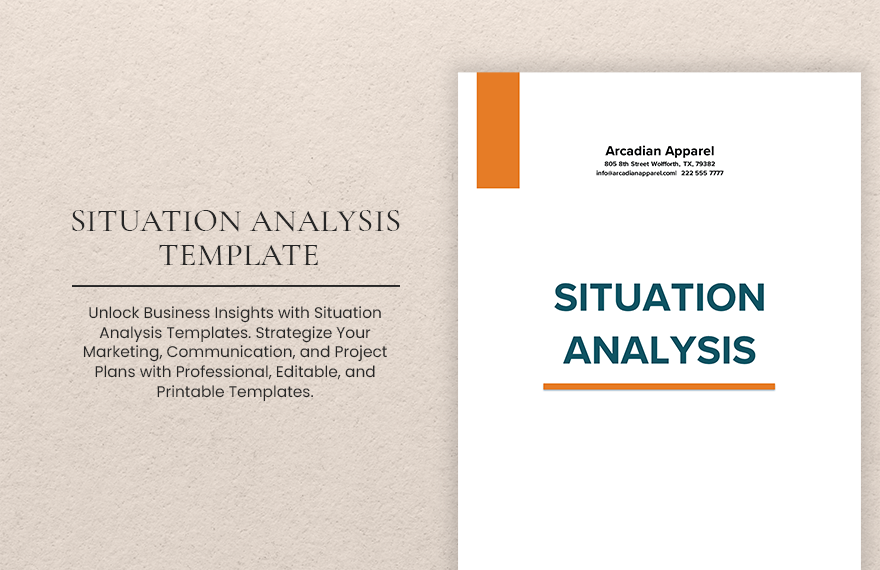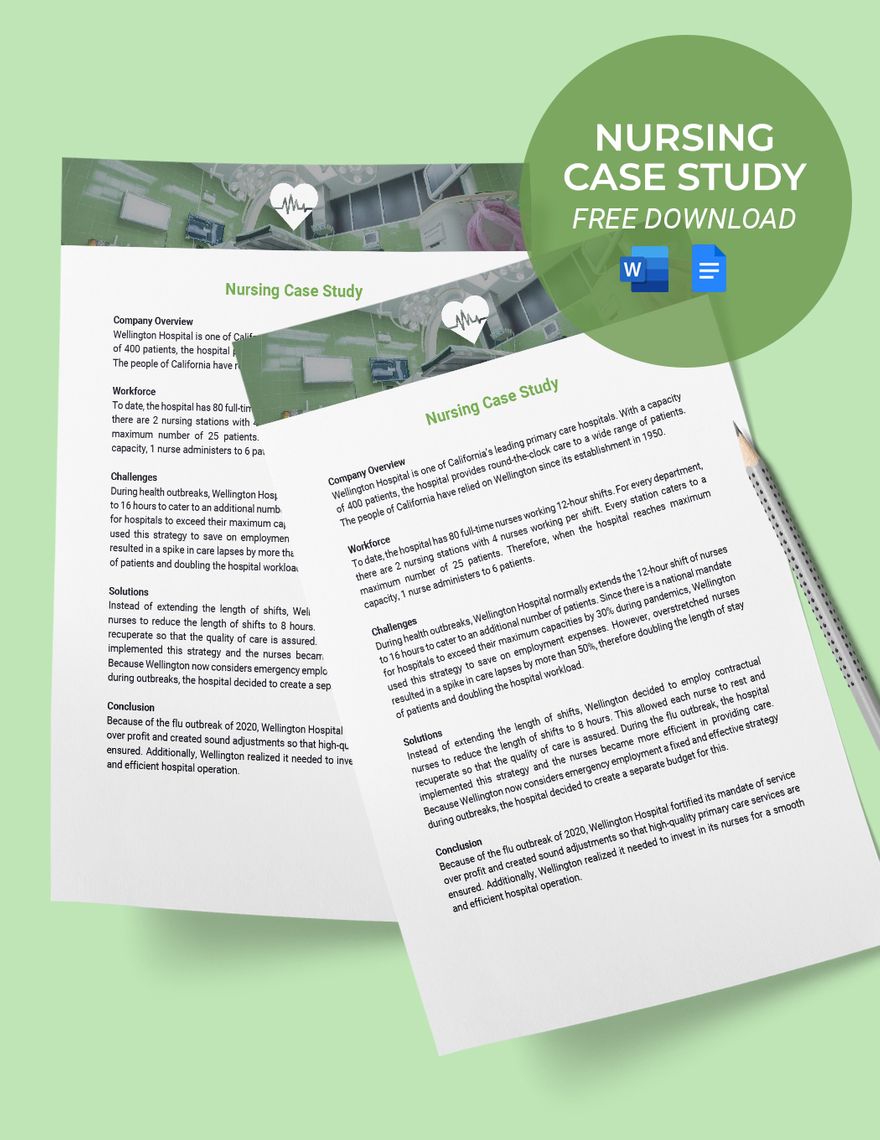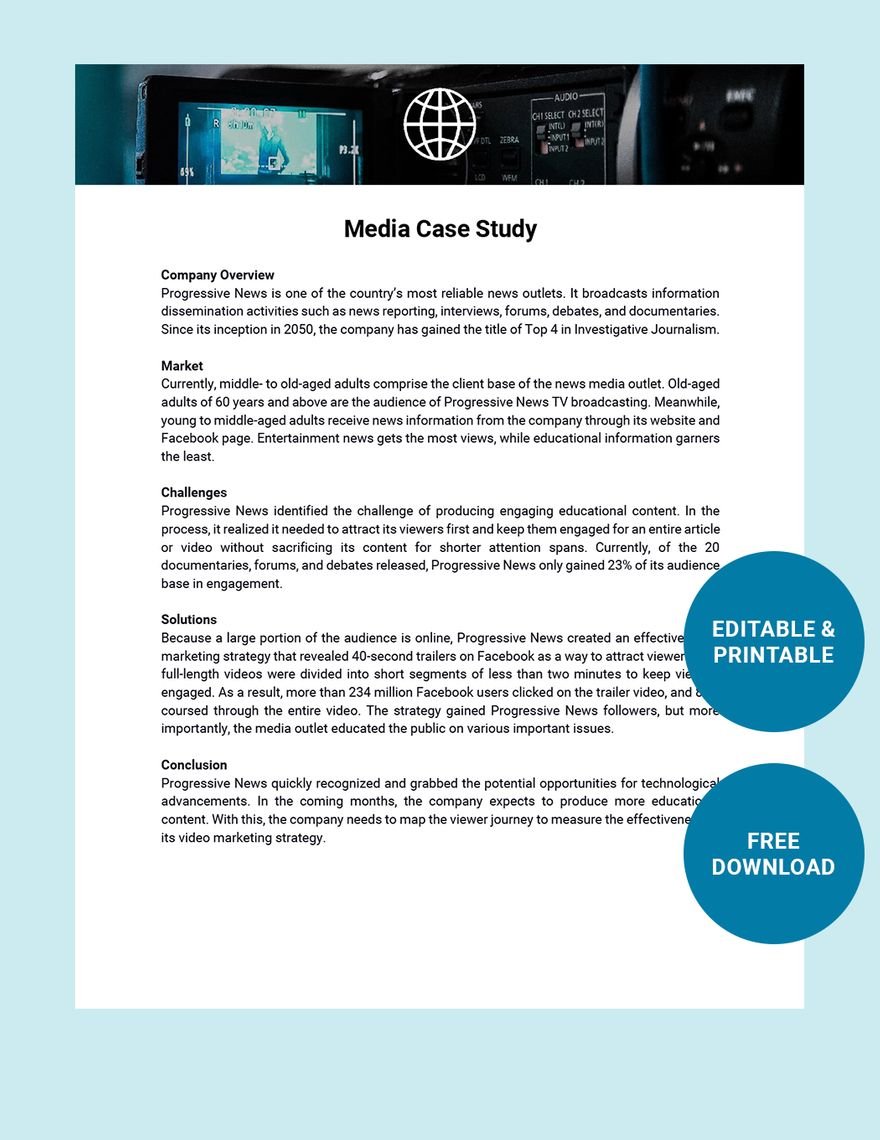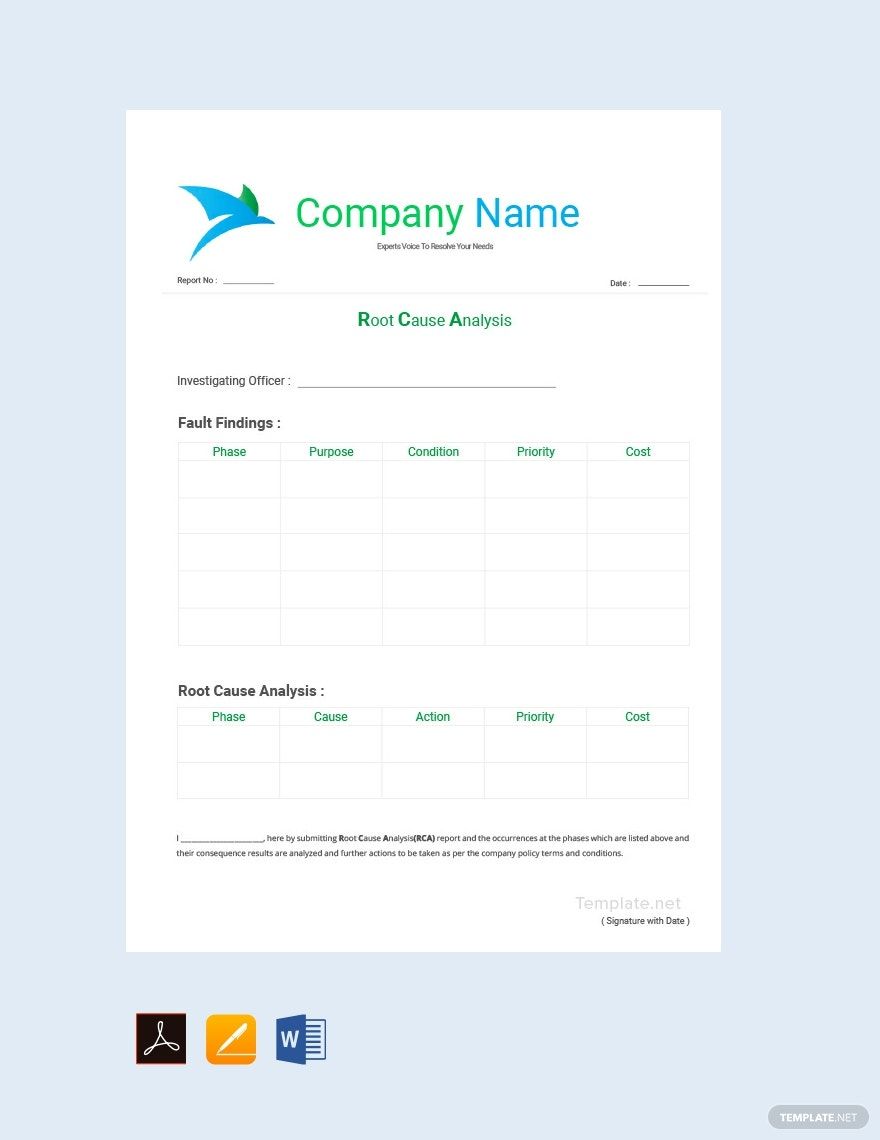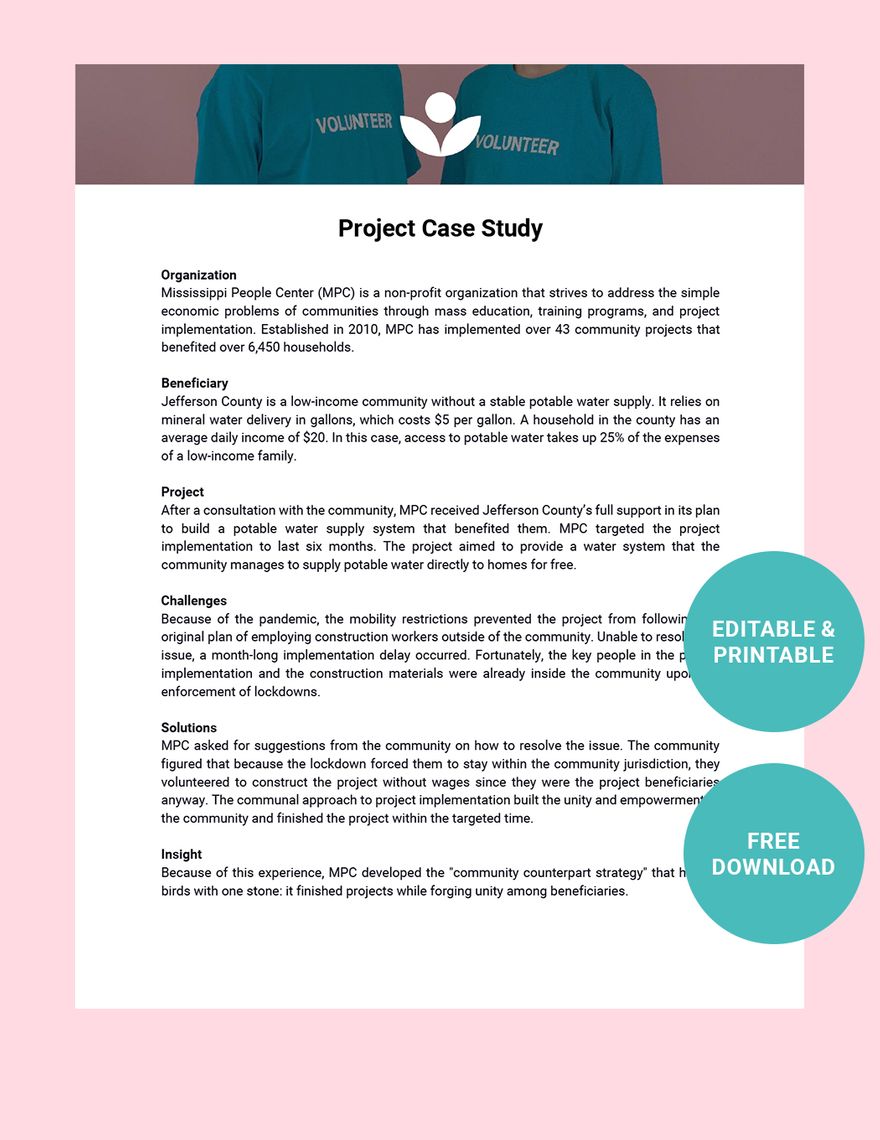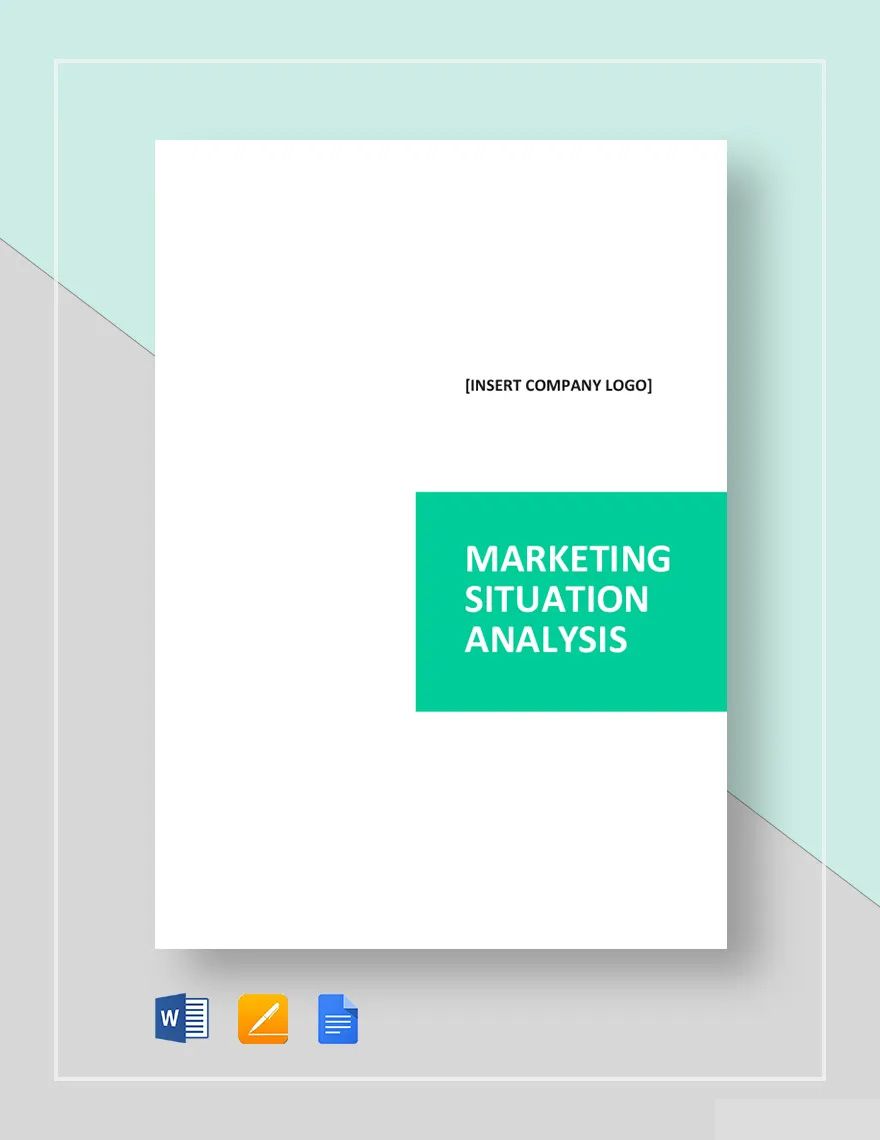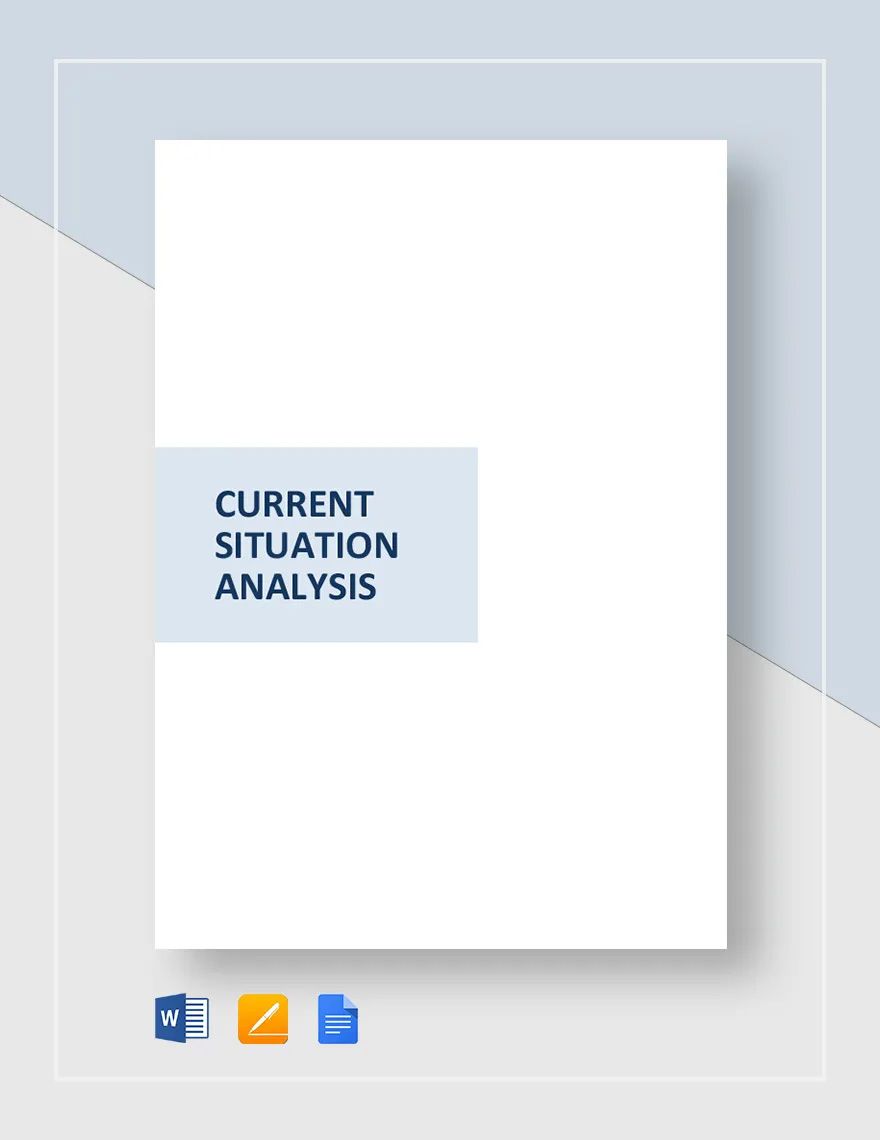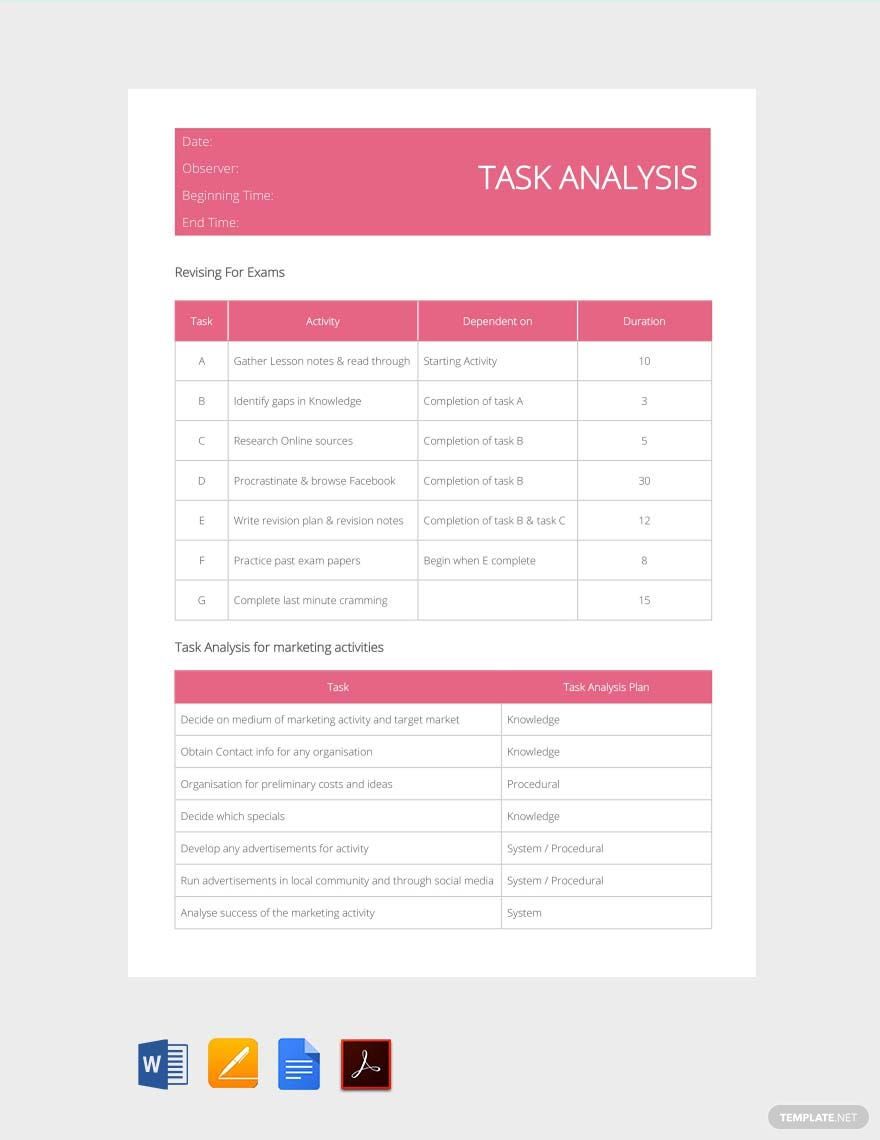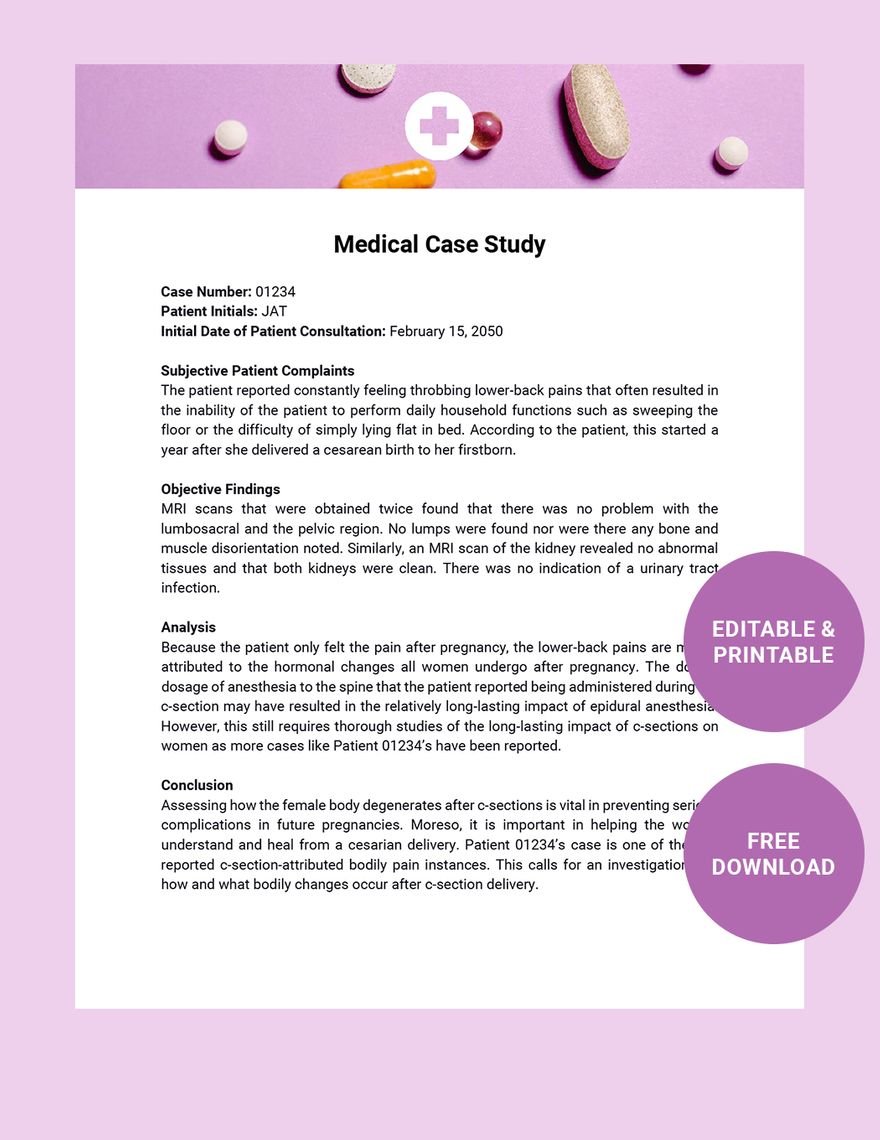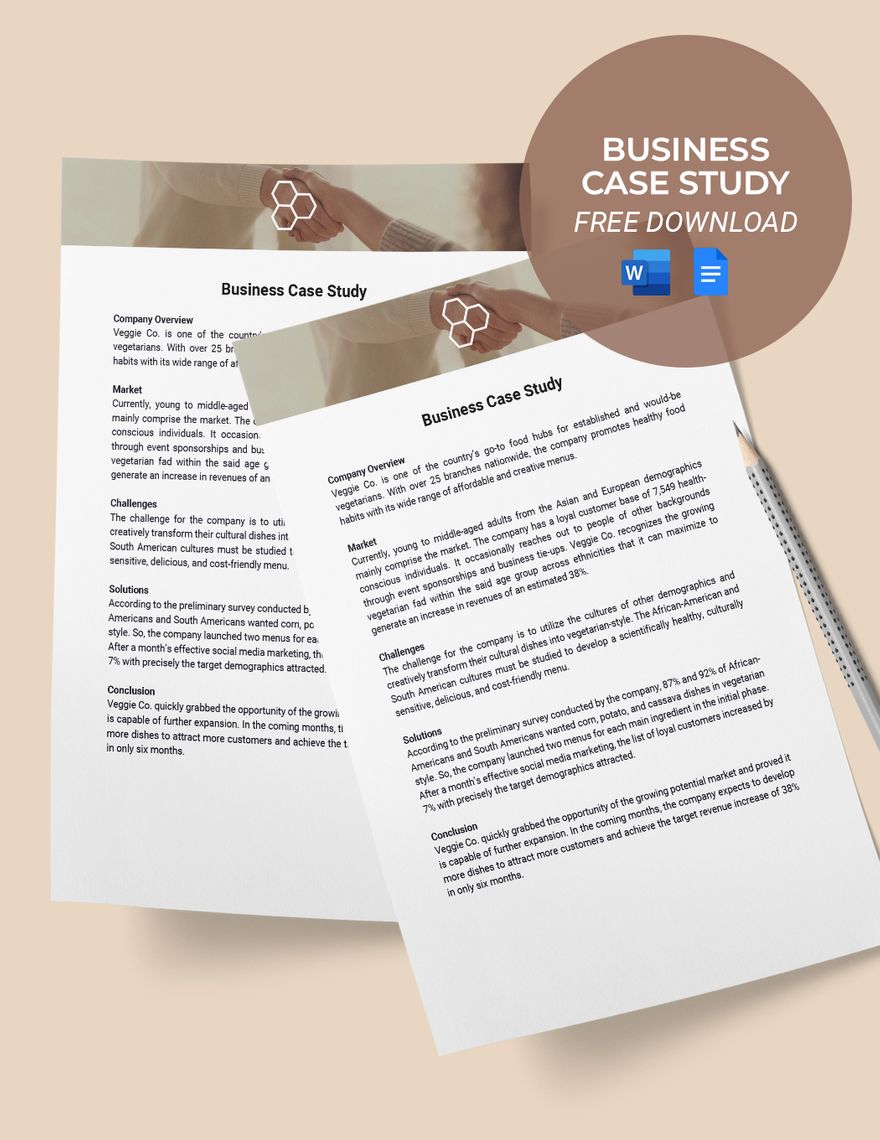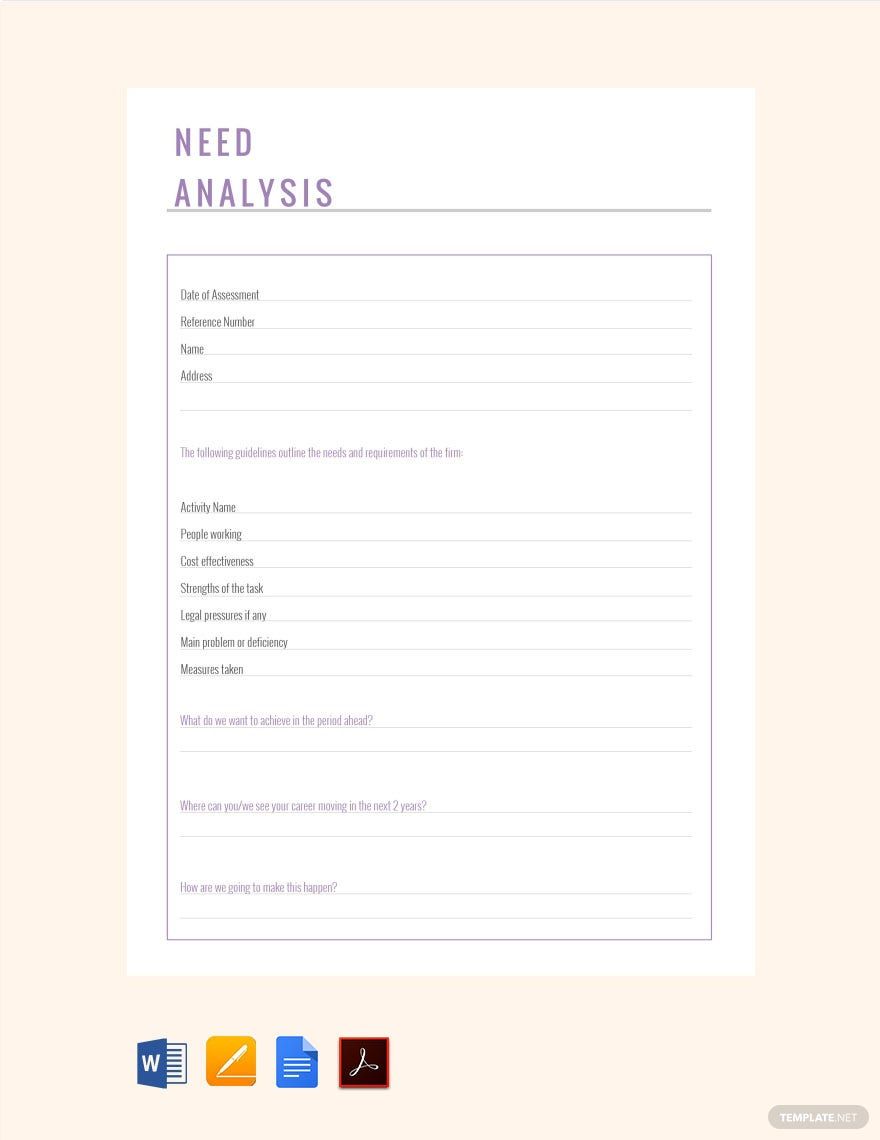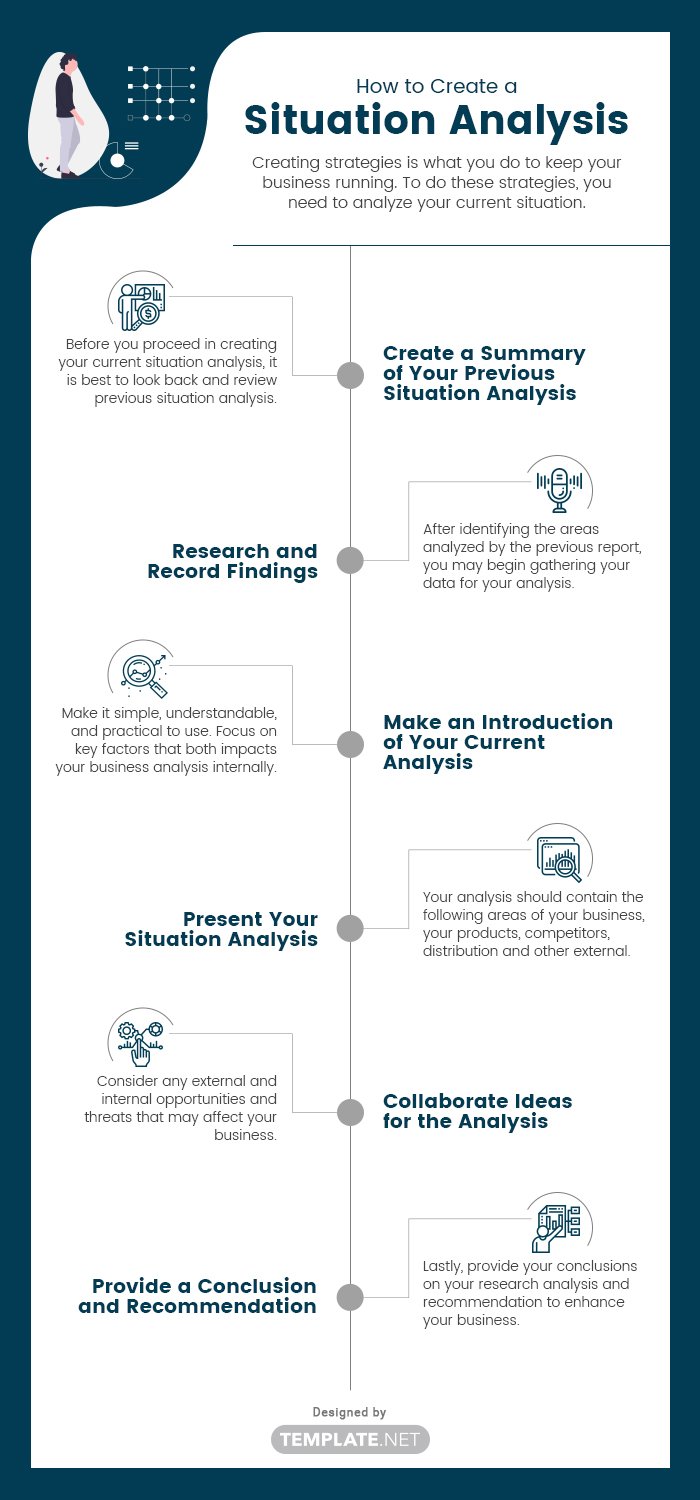Creating strategies is what you do to keep your business running. To do these strategies, you need to analyze your current situation. There are a variety of reasons why businesses fail, and not performing a situation analysis is one of the main reasons for this failure. Knowing where your business stands is crucial to keep it running for the upcoming years, which is why a situation analysis is very important in businesses.
1. Create a Summary of Your Previous Situation Analysis
Before you proceed in creating your current situation analysis, it is best to look back and review previous situation analysis reports made by people assigned to do the task before. You may base your current situation analysis from the previous analysis, and by doing so, a comparison between the two reports is made easier once you present your report to your audience.
2. Research and Record Findings
After identifying the areas analyzed by the previous report, you may begin gathering your data for your analysis. It is up to you if you will stick to the old format or create a new and updated one. You may even add other areas you think are important for your business analysis but were not covered by the previous reports.
3. Make an Introduction of Your Current Analysis
The next step is to create an introduction about your analysis and a little background about it. Make it simple, understandable, and practical to use. Focus on key factors that impact your financial analysis internally and externally. Clearly identify and state your company's future goals. Most of all, allow your situation analysis to further create a chain of analysis to benefit your business.
4. Present Your Situation Analysis
Once every detail is organized in your paper, present your sample analysis. Your analysis should contain the following areas of your business, your products, competitors, distribution and other external forces that may affect your business. Determine if your situation analysis is useful and functional to the group.
5. Collaborate Ideas for the Analysis
After you present your situation analysis, collaborate ideas for your data analysis. Check for any strengths and weaknesses in your business as well as your management and policies. Consider any external and internal opportunities and threats that may affect your business. This is helpful once you are about to make your SWOT analysis.
6. Provide a Conclusion and Recommendation
Lastly, provide your conclusions on your research analysis and recommendation to enhance your business. Focus more on your strengths and opportunities and take advantage of them. At the same time, work on the negative areas of your business. Try to finds ways to avoid or minimize weaknesses and threats that are being encountered by your company.



